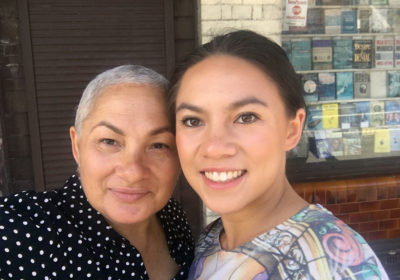
- Stats: 1685 0 0
- Author: Rita Barnett
- Posted: 25/10/2016
- Category: Health and Wellness, Self-Love
Trauma explained – facts you need to know
Trauma explained – facts you need to know
In common language, trauma is ascribed erroneously to all sorts of situations, lessening the impact of what it truly means to have been traumatised.
Having a clear understanding of what trauma is can make a difference in how you can support someone you care about.
Many symptoms of trauma can be normal responses to what has happened. When feelings of safety and security have been restored, symptoms go away by themselves. However, if symptoms last for longer than one month, and occur within three months of the event, Post-Traumatic Stress Disorder (PTSD) can be diagnosed.
Post-Traumatic Stress Disorder (PTSD)
PTSD, as described by the Diagnostic and Statistical Manual IV (DSM-IV) lists it as:
- Direct personal experience that involves actual or threatened death or serious injury, or other threat to one’s personal integrity.
- Witnessing an event that involves death, injury, or a threat to the physical integrity of another person.
- Learning about unexpected or violent death, serious harm or threat of death or injury experienced by a family member or other close associate.
Trauma symptoms
According to Beyond Blue, sufferers experience the following symptoms:
- Memories, flashbacks or dreams of the event which are upsetting.
- Feelings of physical and psychological distress when something reminds you of the event.
As well as at least two of the following:
- Difficulty remembering important pieces of the event.
- Highly negative feelings about self, others and the world.
- Blame themselves or others because of what’s happened.
- Consistent feelings of anger, guilt and shame.
- Loss of interest in doing things previously enjoyed.
- Feel disconnected to others.
- Difficulty in feeling love, joy or excitement.
Additionally, sufferers will have also experienced at least two of the following:
- Difficulty sleeping either by not being able to fall or stay asleep, or having unpleasant dreams.
- Irritable and easily angered.
- Engaged in reckless or behaviour which is self-destructive.
- Easily startled and jumpy.
- Being on guard, watchful or vigilant.
- Difficulty concentrating.
What needs to be understood is that trauma reactions are normal responses to an abnormal event. Rather than simply thinking something is wrong with someone, something severe has happened to them.
This often causes a re-evaluation of the world around them due. Blunting of emotions occurs making it difficult to experience joy and happiness the way they did before.
Survivors often speak about being a different person. They can pinpoint a definite time and place of when their old life stopped and their new one began.
An example of this could be viewed during the 60 minute interview following the Sydney siege at the Lindt café in Martin Place. One of the survivors spoke of not recognising herself in photos prior to the event, so profoundly changed she felt, or traumatised, by what happened to her.
The difference between PTSD and Complex Post Traumatic Stress Disorder
PTSD is attributed to a once off event such as a natural disaster, terrorist attack, accident or the like. However Complex Post Traumatic Stress Disorder (C-PTSD) diagnostic criteria states that it occurs when there has been:
‘a history of subjugation to totalitarian control over a prolonged period’ (Judith Lewis-Herman – Trauma and Recovery, 1992).
That is, trauma occurs within relationships that are meant to be safe and secure. Dr Judith Lewis-Herman was the first to make the clinical distinction between the two diagnoses and called it domestic terrorism. This idea is based on the fact that women and children are in circumstances from which they cannot easily escape.
They’re held hostage within a damaging environment and relationships. Put differently, they’re surviving within captivity. This is especially true for children who have no other choice but to stay as their survival is dependent upon it.
Trauma experts such as Bessel van der Kolk want to classify this type of childhood experience as Developmental Trauma due to the impact it has on a child’s development.
According to the Blue Knot Foundation, trauma affects children in the following ways:
- Having a compromised development of a sense of identity.
- Betrayal of trust.
- The inability to control emotions.
- The knowledge of how to have safe relationships.
- Fragmentation of memories.
This is due to an environment where highly threatening events have occurred such as:
- Repetitively feelings of intense fear.
- It happens within a relationship where there is dependence.
- Emotional abandonment or neglect.
- Inconsistent care giving.
- Sexual/physical/psychological abuse.
- There is a build up over time.
Adult survivors of childhood abuse, trauma and neglect
According to the Blue Knot Foundation, adult survivors can suffer from C-PTSD or Developmental Trauma will often experience the following in their day to day lives:
- Anxiety.
- Depression.
- Health problems (emotional and physical).
- Disconnection with others.
- Shame.
- Isolation.
- Confusion.
- Feeling ‘spaced out’.
- Fear of intimacy.
- Fear of new experiences.
- A general reduced quality of life.
Domestic violence
For women who have survived domestic violence, the diagnostic criteria of C-PTSD is often determined. This is due to the experience of being captive within a relationship where there is repeated abuse. According to Health Direct Australia’s website, Mind, Health, Connect, other symptoms to be aware of can include:
- Suicide attempts.
- Self-harm.
- Drug and alcohol misuse.
- Dissociation.
- Physical pain (Fibromyalgia).
- Vulnerability to abuse and exploitation.
The hope of recovery
As already stated, C-PTSD occurs within relationships, so it’s in relationships where healing can occur. Having relationships where safety and consistency exist is critical within the journey of healing.
Being able to express a sense of self, restoration of personal power and control over life places survivors in good stead for recovery according to Dr Lewis-Herman. This will enable and help rebuild feelings of trust with other people.
The right therapist
It’s important that you feel safe, understood and respected by your therapist. The therapist also needs to have experience of working with traumatised clients.
With love
Rita Xx
Visit Rita at: www.ritabarnett.com.au






